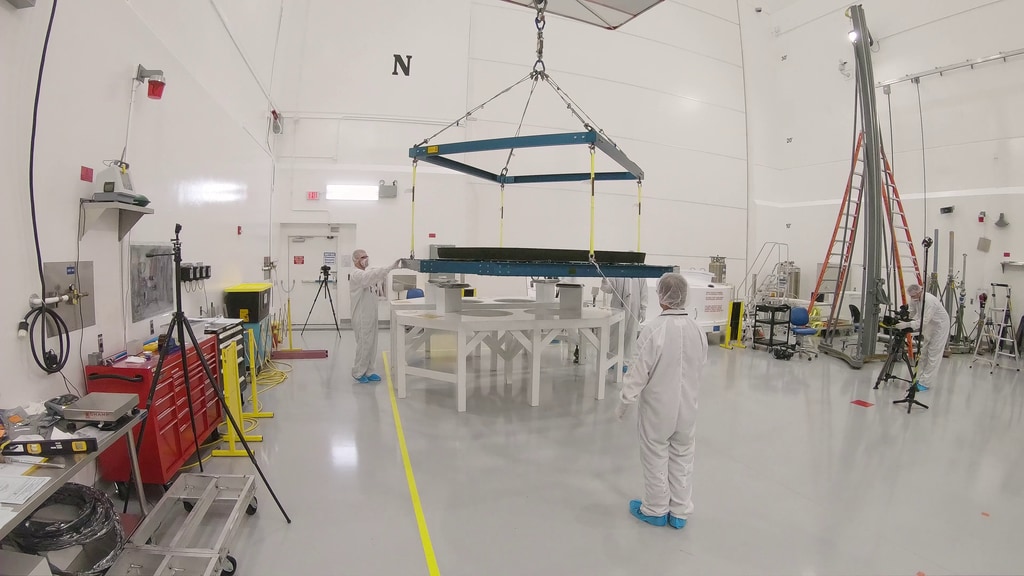Solar Power: Parker Solar Probe Tests Its Arrays
NASA’s Parker Solar Probe gets its power from the Sun, so the solar arrays that collect energy from our star need to be in perfect working order. This month, members of the mission team tested of the arrays at Astrotech Space Operations in Titusville, Florida, to ensure the system performs as designed and provides power to the spacecraft during its historic mission to the Sun.
Parker Solar Probe is powered by two solar arrays, totaling just under 17 square feet (1.55 square meters) in area. They are mounted to motorized arms that will retract almost all of their surface behind the Thermal Protection System – the heat shield – when the spacecraft is close to the Sun.

NASA’s Parker Solar Probe is powered by two solar arrays, shown here on May 2, 2018, at Astrotech Space Operations in Titusville, Florida.
Credit: NASA/Johns Hopkins APL/Ed Whitman

Andrew Gerger, an engineer from the Johns Hopkins Applied Physics Laboratory, prepares to conduct an inspection of one of the solar arrays from NASA’s Parker Solar Probe on May 2, 2018, at Astrotech Space Operations in Titusville, Florida.
Credit: NASA/Johns Hopkins APL/Ed Whitman

Andrew Gerger of the Johns Hopkins Applied Physics Laboratory inspects one of NASA’s Parker Solar Probe’s two solar panels by passing current through the array, which causes it to glow red and allows him to examine each individual solar cell. The testing occurred on May 2, 2018, at Astrotech Space Operations in Titusville, Florida.
Credit: NASA/Johns Hopkins APL/Ed Whitman

Andrew Gerger of the Johns Hopkins Applied Physics Laboratory and Rick Stall of Newforge Technologies check and adjust a purple laser using a replica of a solar array wing on May 3, 2018. Later, when the solar arrays are attached to the spacecraft, the laser will be used to illuminate each string of cells on the array to confirm the string is connected and will provide power to the spacecraft.
Credit: NASA/Johns Hopkins APL/Ed Whitman
Credits
Please give credit for this item to:
NASA's Goddard Space Flight Center
-
Technical support
- Aaron E. Lepsch (ADNET Systems, Inc.)
-
Support
- Joy Ng (USRA)
-
Photographer
- Ed Whitman (Johns Hopkins University/APL)
Missions
This page is related to the following missions:Release date
This page was originally published on Tuesday, May 8, 2018.
This page was last updated on Wednesday, May 3, 2023 at 1:46 PM EDT.
